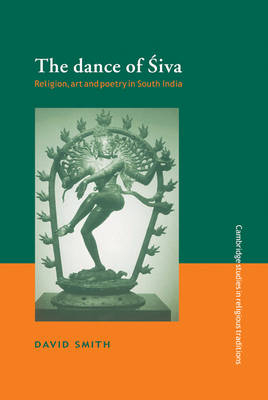
The Dance of Siva
Religion, Art and Poetry in South India
Seiten
1996
Cambridge University Press (Verlag)
978-0-521-48234-9 (ISBN)
Cambridge University Press (Verlag)
978-0-521-48234-9 (ISBN)
Complete account of Siva's Dance of Bliss, which is based on a Sanskrit poem written by Umapati Sivacarya about 1300 AD. It deals with the famous Chola Nataraja bronze - the best-known Hindu image - the key location of Siva's Dance in south India, and the temple of Cidambaram. With thirty illustrations.
This is a full account of Siva's Dance of Bliss, which has become a popular symbol in the West for Hinduism and Eastern Mysticism. Siva is one of the two main gods of Hinduism, and his worshippers comprise half of all Hindus. Siva's Dance of Bliss is based on a remarkable Sanskrit poem written by Umapati Sivacarya, Saiva theologian and temple priest in Cidambaram, South India, in the fourteenth century. Starting with the bronze image of Nataraja, King of Dancers, thereafter the Cidambaram temple, its myth and its priests are viewed in the light of the poem. Umapati's Saiva theology is discussed in relation to his life and also in relation to Vedanta and yoga. The iconography and mythology of the Goddess and of other forms of Siva provide necessary perspective. Art from Cidambaram and neighbouring sites illuminates the text.
This is a full account of Siva's Dance of Bliss, which has become a popular symbol in the West for Hinduism and Eastern Mysticism. Siva is one of the two main gods of Hinduism, and his worshippers comprise half of all Hindus. Siva's Dance of Bliss is based on a remarkable Sanskrit poem written by Umapati Sivacarya, Saiva theologian and temple priest in Cidambaram, South India, in the fourteenth century. Starting with the bronze image of Nataraja, King of Dancers, thereafter the Cidambaram temple, its myth and its priests are viewed in the light of the poem. Umapati's Saiva theology is discussed in relation to his life and also in relation to Vedanta and yoga. The iconography and mythology of the Goddess and of other forms of Siva provide necessary perspective. Art from Cidambaram and neighbouring sites illuminates the text.
List of illustrations; Acknowledgements; Introduction; 1. The Natarāja bronze; 2. The Cidambaram myth; 3. Temple, priests and ritual; 4. The Hall of Consciousness, the Heart of the Universe; 5. Śaiva Siddhānta and Vedānta; 6. The Goddess; 7. Bhiksātana; 8. Bhairava the Terrible and other forms of Śiva; 9. Saints, dancing girls, ganas and Apasmāra; 10. Last words; Notes; Bibliography; Index and glossary.
| Erscheint lt. Verlag | 26.7.1996 |
|---|---|
| Reihe/Serie | Cambridge Studies in Religious Traditions |
| Zusatzinfo | 30 Halftones, unspecified |
| Verlagsort | Cambridge |
| Sprache | englisch |
| Maße | 158 x 237 mm |
| Gewicht | 672 g |
| Themenwelt | Geisteswissenschaften ► Religion / Theologie ► Hinduismus |
| ISBN-10 | 0-521-48234-8 / 0521482348 |
| ISBN-13 | 978-0-521-48234-9 / 9780521482349 |
| Zustand | Neuware |
| Haben Sie eine Frage zum Produkt? |
Mehr entdecken
aus dem Bereich
aus dem Bereich
Worshipping the Eternal Mother at a North American Hindu Temple
Buch | Hardcover (2024)
Oxford University Press Inc (Verlag)
CHF 136,00


